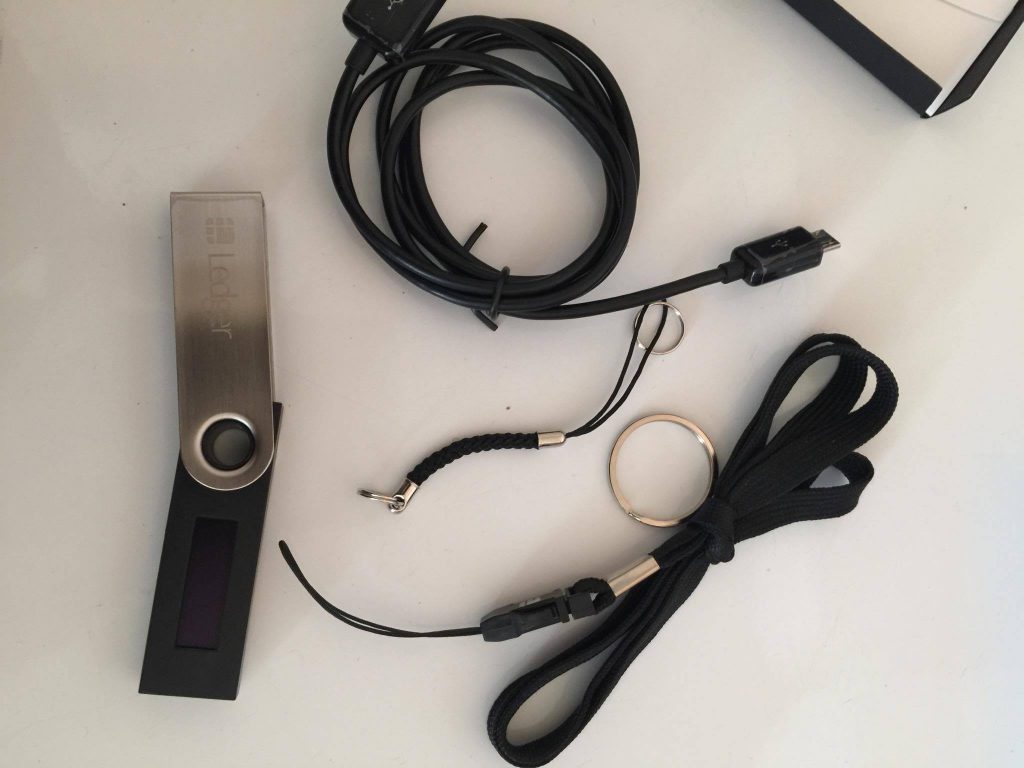
The Nano S: A 7-Year-Old Can Use It
 Ledger has done fairly well for themselves by improving their product line, and the latest release of the Nano S is no different. Older hardware wallets such as the original Ledger, in my opinion, were not as user-friendly like its competitor Trezor. However, after reviewing the Nano S with my seven-year-old son, Joshua, who loves cryptocurrency, we both found the latest offering very easy to use.
Ledger has done fairly well for themselves by improving their product line, and the latest release of the Nano S is no different. Older hardware wallets such as the original Ledger, in my opinion, were not as user-friendly like its competitor Trezor. However, after reviewing the Nano S with my seven-year-old son, Joshua, who loves cryptocurrency, we both found the latest offering very easy to use.
My Ledger Nano S came in the mail from France and was securely sealed with a tamper-evident tape and plastic wrap encasing the package. After carefully opening the box, which looks similar to the way an Apple product is packaged, my son and I were pleased with how nice the device looked. The Nano S is small and encased by a damage proofing aluminium cover and has only two physical buttons. It also has an insert for a micro USB connection with a much longer cord than the Trezor.
 The Nano S requires the use of Google Chrome extensions when connecting the device to any computer. Before connecting the Ledger, a user can set a 4-digit pin on the instrument itself, which eliminates any key logging. Additionally, we wrote down the 24-word mnemonic phrase on a paper provided by the device. This was a good lesson for my son as I did not do the seed step with him when we first played with our Trezor last year. He learned all about what a mnemonic phrase was and also helped him with the pronunciation of each word. After completing all 24 words, the machine then asked about three of the words that were displayed with the initial seed step and asked what number was applied to each word.
The Nano S requires the use of Google Chrome extensions when connecting the device to any computer. Before connecting the Ledger, a user can set a 4-digit pin on the instrument itself, which eliminates any key logging. Additionally, we wrote down the 24-word mnemonic phrase on a paper provided by the device. This was a good lesson for my son as I did not do the seed step with him when we first played with our Trezor last year. He learned all about what a mnemonic phrase was and also helped him with the pronunciation of each word. After completing all 24 words, the machine then asked about three of the words that were displayed with the initial seed step and asked what number was applied to each word.
After setting the pin and going through the seed routine, the next thing my son and I did was connect it to the wallet page start.ledgerwallet.com. The page asked what device was in use, and when connected it displayed two choices: add a Bitcoin wallet or add an Ethereum wallet extension.
We decided to test the Bitcoin section as my son is more of a fan of that specific cryptocurrency, even though last year he liked altcoins a whole lot more. The setup took less than a minute, after which we were welcomed by the wallet interface.
The screen shows an “accounts” section for multiple addresses, send and receive options, and settings. My son pressed the receive button, and it gave us a random public address with a QR code as well. We decided to send $3 dollars in bitcoin to the address by using another wallet I had opened in our Safari browser. The process of sending again took less than minute, and the funds were immediately viewable on the Ledger wallet dashboard. There was a small wait for confirmations, which can be monitored in the interface. Sending bitcoin back to my other wallet was no different and just as simple.
The display on the device was also very cool, and my son noted that the bright green lettering was brighter than the Trezor screen. However, Joshua really digs the pictures of Doge displayed on our Trezor as well.
Affordable Bitcoin Protection
The Ledger Nano S is fairly cheaper than most hardware models out there today, at roughly $65 for this particular device — and you can, of course, pay in bitcoin. It’s also open source and developer friendly, as additional apps can be added. My son and I had a fun time experimenting with the hardware wallet and look forward to breaking it in by adding more Bitcoin and possibly some Ether.


